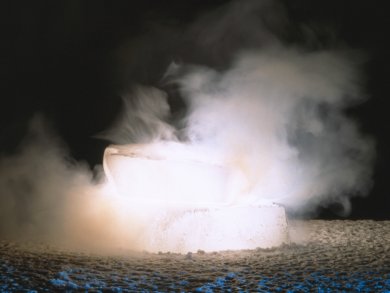Narayan Hosmane and co-workers, Northern Illinois University, USA, have discovered a simple method for producing high yields of graphene by burning magnesium metal in dry ice — a common experiment, but one where the products have not been fully characterized until now. The team has shown that graphene was formed in few-layer nanosheets up to 10 atoms thick. The material was characterized by Raman spectroscopy, energy-dispersive X-ray analysis, X-ray powder diffraction, and transmission electron microscopy.
Graphene has been synthesized by various methods utilizing hazardous chemicals and tedious techniques. This new method is simple, green, and cost-effective. The authors note that this method not only provides a route to graphene, but is also a method of carbon capture that directly converts CO2 into a material with main potential applications.
Image: Magnesium in dry ice. (c) Andy Washnik/Wiley Archive
- Conversion of carbon dioxide to few-layer graphene
A. Chakrabarti, J. Lu, J. C. Skrabutenas, T. Xu, Z. Xiao, J. A. Maguire, N. S. Hosmane,
J. Mater. Chem. 2011, 21, 9491-9493.
DOI: 10.1039/C1JM11227A



